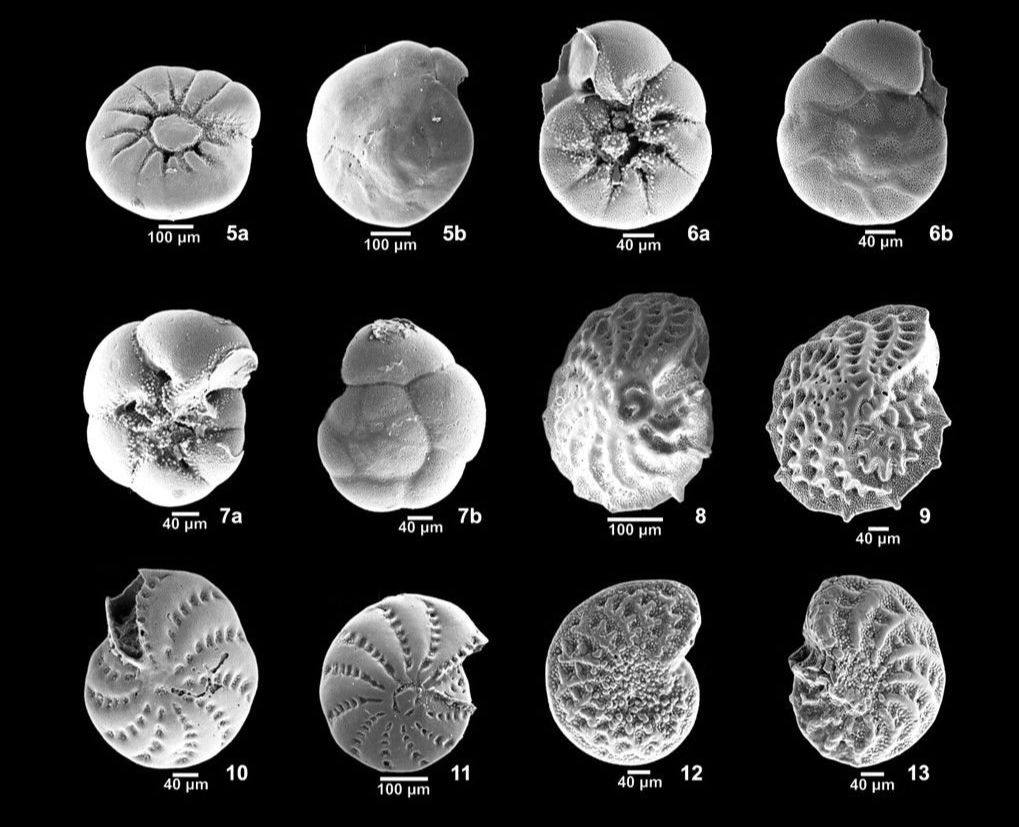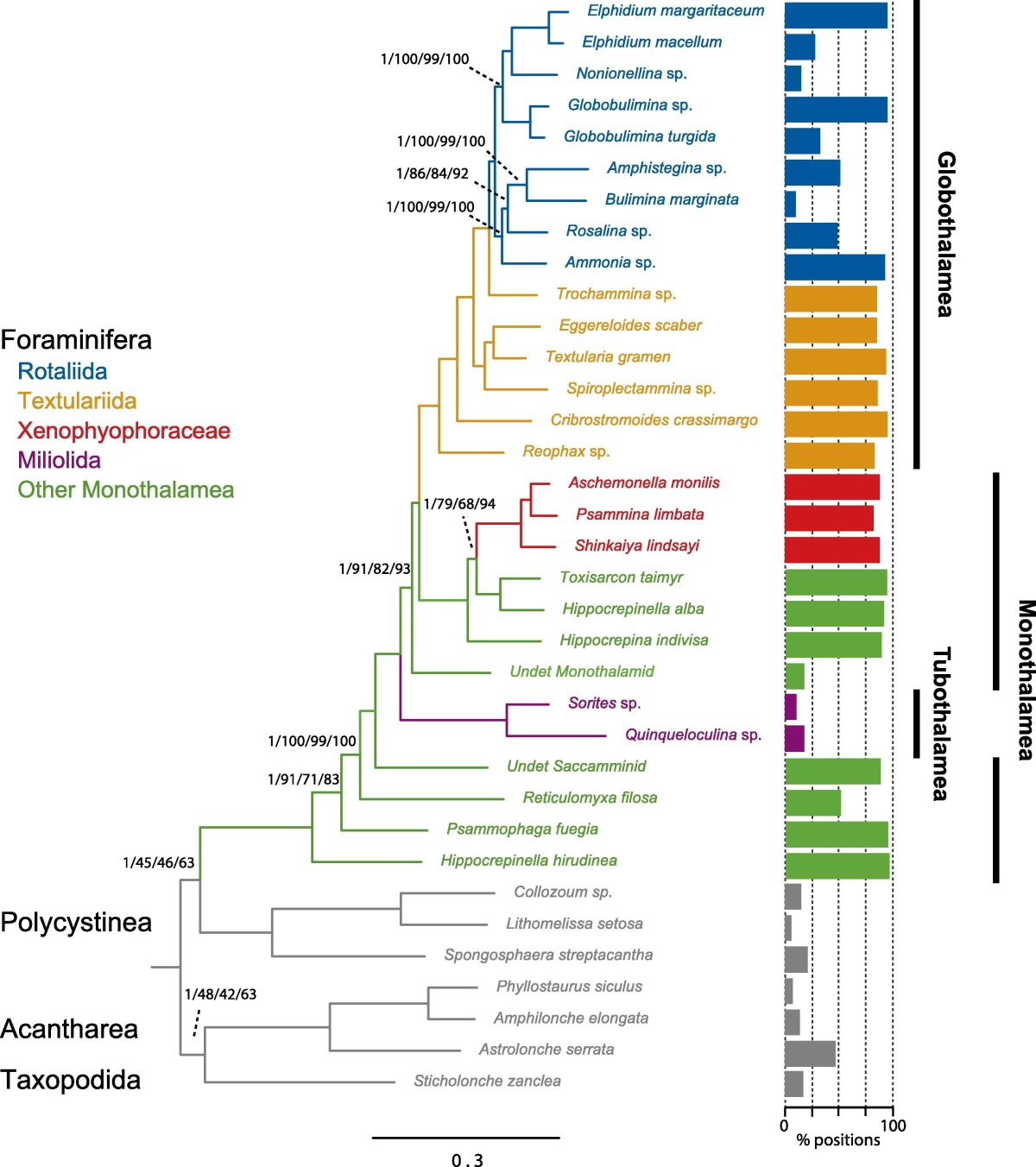Establishing a new phylogeny for foraminifera
Poorly known organisms
We explored the evolutionary relationships and major trends in Foraminifera, a diverse and ecologically significant group of marine protists. These organisms, classified within the supergroup Rhizaria, play a crucial role in marine ecosystems and serve as valuable indicators in paleoclimate and paleoceanography studies. Despite their importance, the molecular phylogeny of Foraminifera has largely relied on ribosomal RNA data, which is prone to variability and limits our understanding of their evolutionary history. To address these gaps, we utilized transcriptomic data from 28 species, including 19 newly sequenced taxa, with a particular focus on underrepresented groups such as the Monothalamea. By employing a robust phylogenomic approach, we aimed to clarify the evolutionary relationships within Foraminifera and contribute to a deeper understanding of marine biodiversity.


Samples of Foraminifera were collected from diverse marine environments, ranging from shallow coastal regions to deep-sea ecosystems. RNA was extracted and sequenced to produce high-quality transcriptomic datasets, which were then analyzed using 199 protein-coding genes to construct phylogenomic trees. Our analyses confirmed the monophyly of Foraminifera and their close evolutionary relationship with Polycystinea. Within the group, we found that single-chambered Monothalamea are paraphyletic, giving rise to the more complex, multi-chambered Tubothalamea and Globothalamea.
One particularly exciting discovery was the position of Xenophyophorea, a group of large, deep-sea Foraminifera. Contrary to earlier hypotheses suggesting they were primitive, our data revealed that they are a highly derived lineage within Monothalamea. Additionally, we clarified the evolutionary relationships within other groups, including the Globothalamea, where our findings supported the paraphyletic nature of agglutinated Textulariida and the monophyly of calcareous Rotaliida. These results align with and expand upon prior ribosomal DNA phylogenies, while offering new insights into the origins and diversification of key taxa.
Through this work, we provide the first comprehensive phylogenomic reconstruction of Foraminifera, offering a detailed perspective on their evolutionary trends and higher-level classification. Our findings underscore significant evolutionary transitions, such as the development of multi-chambered test structures from simpler forms. By including transcriptomic data from previously underrepresented taxa, we have not only resolved longstanding questions about the evolutionary relationships within Foraminifera but also set a foundation for future research into their genetic and functional diversity. This study enhances our understanding of marine evolutionary biology and highlights the power of transcriptomics in addressing complex phylogenetic questions.
For more information, see the published paper.

